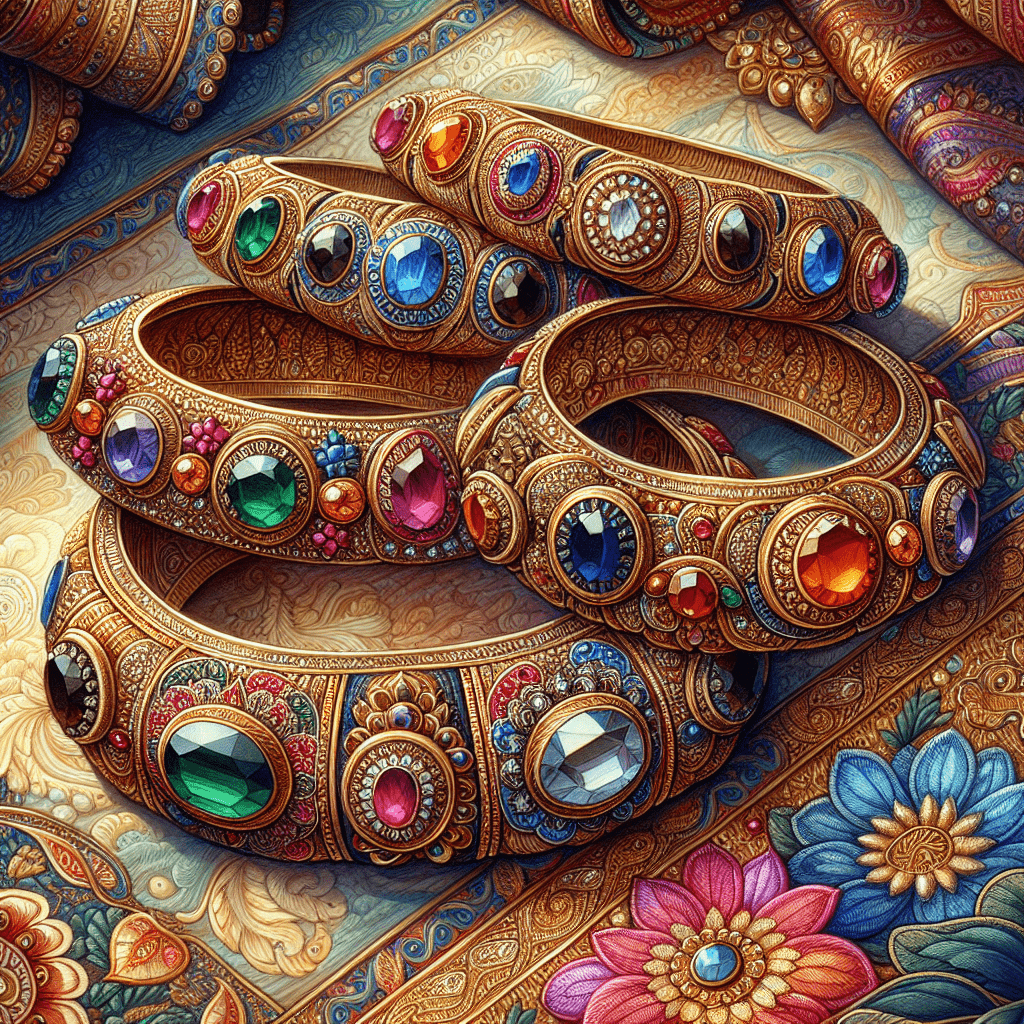The Indian bracelet, a piece of jewelry that has been an integral part of the Indian subcontinent’s cultural and artistic heritage for centuries, is much more than a mere accessory. It is a symbol of tradition, a marker of significant life events, and an expression of personal style and identity. In this exploration of the Indian bracelet, we delve into its history, significance, varieties, and the craftsmanship that makes it a sought-after adornment worldwide.
The Historical Significance of Indian Bracelets
The history of the Indian bracelet stretches back to ancient times when these accessories were crafted from a variety of materials, including metal, stone, ivory, and even wood. Archaeological excavations in the Indus Valley Civilization have unearthed terracotta and shell bracelets, highlighting their antiquity. These bracelets were not only decorative but also held immense cultural significance, often reflecting the wearer’s social status and regional identity.
The role of bracelets in Indian society has evolved, yet they have remained a constant in the fabric of Indian culture. For instance, in Hinduism, certain types of bracelets like the ‘kara’ are worn for religious purposes. In some communities, specific designs and materials may signify marital status or regional heritage.
Craftsmanship and Materials
The Indian bracelet is a testament to the region’s rich craftsmanship. Artisans from different parts of India have developed unique styles and techniques that reflect their local traditions and resources. The materials used in Indian bracelets range from precious metals like gold and silver to more accessible ones like brass, copper, and even lac. Gemstones, pearls, and beads are often embedded to add color and intricacy.
Gold is highly valued in Indian jewelry-making and is often associated with wealth and prosperity. Silver, on the other hand, is popular for its affordability and is used extensively in tribal and folk jewelry. The art of enameling, known as ‘Meenakari’, and the use of filigree work are examples of the exquisite techniques employed in creating these bracelets.
Styles and Designs of Indian Bracelets
Indian bracelets come in a myriad of designs, each with its unique appeal and cultural connotation. Some popular styles include:
- Bangles: Typically circular in shape and without a clasp, bangles are worn in sets and produce a melodious jingle when they move. They are made of various materials and often carry significant meanings, especially for married women.
- Kadas: These are thick, usually metal bracelets with a clasp or screw opening. They can be plain or intricately designed with carvings and inlay work, often adorned by both men and women.
- Cuff Bracelets: Wider than bangles and kadas, cuff bracelets are adjustable and make a bold statement. They may be crafted with traditional motifs or contemporary designs, catering to diverse tastes.
- Charm Bracelets: These bracelets feature small pendants or charms that hold personal significance. The charms can represent religious symbols, cultural icons, or memorable life events.
- Beaded Bracelets: Made with a string of beads, these bracelets are versatile and can range from simple strands to elaborate, multi-layered pieces incorporating various colors and materials.
The Indian Bracelet in Modern Fashion
Today, the Indian bracelet continues to be an influential element in global fashion. Its timeless appeal and adaptability have made it a favorite among people of all ages and backgrounds. Contemporary designers often fuse traditional Indian elements with modern aesthetics to create pieces that resonate with today’s fashion-forward individuals.
The versatility of Indian bracelets allows them to be styled for various occasions, from casual outings to grand weddings. They can be mixed and matched with Western attire to add an exotic touch or worn with traditional Indian outfits to complete an authentic look.
Preservation of the Art
The making of Indian bracelets is an art that requires preservation and promotion. As modernization poses a threat to traditional crafts, efforts are being made to keep these skills alive. Artisan communities are supported through initiatives that provide them with platforms to showcase their work and ensure fair trade.
Collectors and connoisseurs of jewelry are increasingly recognizing the value of handcrafted Indian bracelets. By choosing to purchase authentic pieces, they contribute to sustaining the livelihoods of artisans and the continuation of age-old traditions.
Conclusion
The Indian bracelet is not just an accessory; it is a narrative of India’s past, a reflection of its diverse cultures, and a canvas for its artistic expression. From the bangles that ring in the festive air to the kadas that signify strength and resilience, Indian bracelets are a celebration of beauty and heritage.
As we embrace the future, it is vital to honor and perpetuate the artistry and significance of the Indian bracelet. By doing so, we ensure that this emblem of Indian culture continues to captivate and adorn generations to come. Whether one admires the intricate designs, the rich history, or the cultural symbolism, the Indian bracelet remains an enduring jewel in the crown of India’s artistic legacy.

